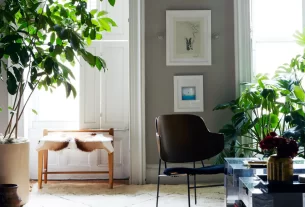Exploring geometric shapes and patterns is an emerging trend that adds an eye-catching element to any design and style scheme, from refined traditional spaces to bold contemporary ones. Geometric designs look at home in all spaces ranging from refined traditional settings to trendy contemporary spaces.
Geometric patterns come in all forms – from an eye-catching trellis-print sofa to an elaborate hexagonal dining table. To achieve a balanced appearance, select geometric motifs with clean lines for best results.
Circles
Circles symbolize wholeness, integration and equilibrium, with their gentle curved lines providing a relaxing energy into any environment. You’ll often see this shape found throughout nature such as with the sun, moon and earth as well as everyday objects like wheels and merry-go-rounds.
Circles add an eye-catching pop of color and pattern in any design, and can also show movement in still images. They create an image that feels cosmic or whimsical while at the same time symbolizing mystery and intrigue – squares, triangles and circles are among the most commonly found geometric figures, with circle components such as its center chord radius secant tangent being crucial components.
Squares
Squares and rectangles can add structure to an interior space when used in wallpaper patterns or as custom pieces of furniture, providing structure without becoming boring over time. Beware though as overdoing it will quickly lead to boredom!
A square is a polygon with four equal-length sides and four right angles that form four right angles, also known as regular quadrilaterals because their sides have parallel and perpendicular surfaces.
Squares and rectangles are easily recognizable shapes in everyday life, especially as part of architectural structures. By adding just a few squares or rectangles into your design scheme, adding visual interest instantly!
Triangles
Geometric shapes are versatile enough to complement any room – from refined traditional to daring contemporary – as well as today’s popular design trends.
Triangles are closed figures composed of three sides connected by three vertices, often marked with tick marks on its sides called hatch marks to help ensure its equal length sides. If any two of its hatch marks match up then both of the equal sides have equal length sides.
Triangles can be classified according to their largest angle measurement and other elements like vertex distance and angle measurements. Acute triangles have all interior angles measuring less than 90 degrees while right or obtuse triangles contain all interior angles over 90 degrees.
Octagons
Geometric shapes add drama to any room. Be mindful not to overload them with patterns – too many patterns can make your space seem over-stimulated!
An octagon is a polygon with eight sides and eight interior angles, and rotational symmetry of order 8.
Octagons can either be convex or concave; the former bulging outward, and the latter having inward angles.
Hexagons
Hexagons add texture and depth to any home decor scheme, whether used as kitchen backsplash or wall art. Their geometric shape provides an eye-catching focal point in any space they adorn.
Six-sided polygons can be found everywhere in nature – from honeycomb walls and dragonfly compound eyes, benzene molecules and organic molecules such as benzene. You’ll even find one on Saturn: its northern polar region appears to be an enormous hexagon according to scientists.
Add hexagons to your home by including them in wall art or tiling your backsplash with hexagonal tiles in modern colors like this one from deavita.
Diamonds
Diamonds are an iconic geometric shape that make for an eye-catching design feature, and an effective way to incorporate subtler patterns. Use diamonds in your next creative project or use them to add fun festive designs that stand out.
Diamonds are composed of carbon atoms arranged naturally into crystal formations. While some diamonds form quickly within days or weeks, others take much longer depending on temperature, pressure and their source of carbon.
Diamonds are famously revered for their brilliant shine, caused by the dispersion of white light through multiple wavelengths that pass through it. This allows different colors to shine through a diamond’s crystal structure and give it its beautiful sparkle.




